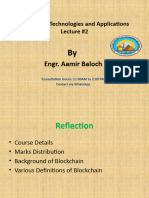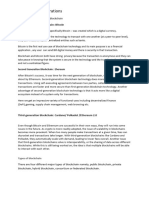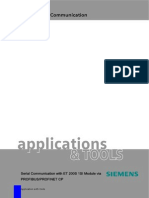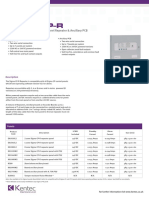0% found this document useful (0 votes)
12 views15 pagesBlockchain Generations
The document outlines the evolution of blockchain technology across three generations: 1st Generation (Bitcoin and other cryptocurrencies), 2nd Generation (Ethereum and smart contracts), and 3rd Generation (Cardano, Cosmos, and enhanced governance). Each generation addresses specific challenges such as scalability, interoperability, and governance. The 3rd Generation introduces solutions like sharding, cross-chain transfers, and token holder voting for improved functionality.
Uploaded by
ChrisCopyright
© © All Rights Reserved
We take content rights seriously. If you suspect this is your content, claim it here.
Available Formats
Download as PDF, TXT or read online on Scribd
0% found this document useful (0 votes)
12 views15 pagesBlockchain Generations
The document outlines the evolution of blockchain technology across three generations: 1st Generation (Bitcoin and other cryptocurrencies), 2nd Generation (Ethereum and smart contracts), and 3rd Generation (Cardano, Cosmos, and enhanced governance). Each generation addresses specific challenges such as scalability, interoperability, and governance. The 3rd Generation introduces solutions like sharding, cross-chain transfers, and token holder voting for improved functionality.
Uploaded by
ChrisCopyright
© © All Rights Reserved
We take content rights seriously. If you suspect this is your content, claim it here.
Available Formats
Download as PDF, TXT or read online on Scribd
/ 15























































































